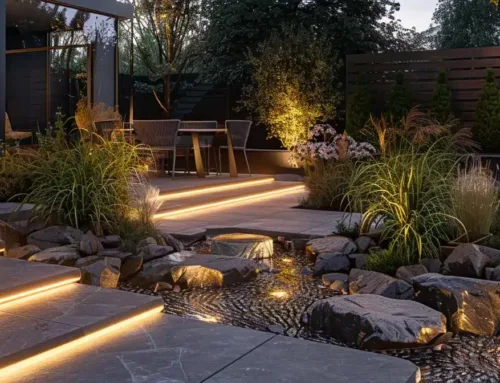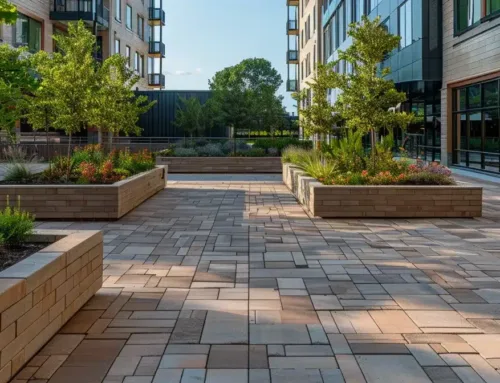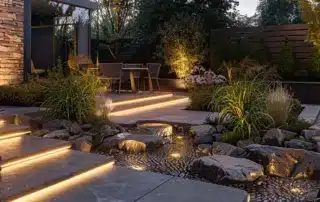Are you looking for sustainable landscaping solutions that enhance your outdoor space? Native plant landscaping is not just visually appealing; it offers numerous environmental benefits. In this post, I will cover the importance of native plants for enhancing biodiversity, their cost efficiency, and how they can engage the community. Learning about these advantages will help you make informed decisions for a thriving and eco-friendly landscape.
Understanding the Importance of Native Plant Landscaping

I define native plant landscaping as the practice of using plants that are naturally found in our region. This approach supports biodiversity, conserves water, and helps our natural environment adapt to climate change. In the following sections, I will explore how native plants can reduce the need for lawn maintenance, enhance our local ecosystems with the help of hardscaping services, and contribute positively to the water supply. For comprehensive solutions, consider partnering with bret mar landscape.
Defining Native Plant Landscaping and Its Core Concepts
Native plant landscaping involves using local flora, known as native species, to create beautiful and sustainable outdoor spaces. This approach not only enhances the ecology of the area, improving biodiversity, but also supports aquatic ecosystems by filtering runoff and mitigating air pollution. By incorporating meadows filled with native plants, we can create vibrant landscapes that are both functional and supportive of our environment.
Native plants do more than beautify our land; they serve a vital purpose in the ecosystem. Let’s look closely at the environmental benefits these plants bring and see why they matter.
Examining Environmental Benefits of Native Plant Landscaping

Native plant landscaping brings numerous environmental advantages, enhancing local ecosystems through the preservation of perennial plants. Supporting pollinators and wildlife habitats fosters biodiversity, while reducing water usage minimizes the risk of algal blooms and soil erosion. By integrating these principles into our landscape designs, I focus on creating an environment that thrives sustainably and collaborates with nature.
Enhancing Local Ecosystems Through Native Species
Using native plants enhances local ecosystems by providing essential habitat for wildlife and supporting pollinators. For instance, a native prairie landscape can naturally filter runoff, reducing the need for irrigation and minimizing flood risks in urban areas. Furthermore, by reducing pesticide use, we create healthier environments that allow our local ecosystems to thrive without harmful chemicals.
Supporting Pollinators and Other Wildlife Habitats
Supporting pollinators and wildlife habitats is a key benefit of native plant landscaping. By selecting local groundcover species, I create rich ecosystems that provide food and shelter for bees, butterflies, and other beneficial insects. These plants also improve stormwater management, filtering runoff and preventing the spread of invasive species, further enhancing the environment’s health and sustainability.
Reducing Water Usage and Soil Erosion
By utilizing native plants in our landscapes, I significantly reduce water usage and minimize soil erosion. Native species are adapted to local conditions, often requiring less irrigation once established. This approach not only conserves water but also enhances habitats for pollinators, supporting diverse ecosystems while maintaining soil integrity—principles emphasized by the Xerces Society. Incorporating compost in these native landscapes enriches the soil, promoting healthier plant growth and further reducing runoff.
Native plants thrive and support the earth, but they also bring beauty to our yards. Let’s explore how these plants can transform your outdoor space into a striking landscape.
Improving Aesthetic Appeal With Native Plants

In my experience, creating natural landscapes that mimic regional habitats enhances aesthetic appeal while supporting wildlife. Native wildflowers provide seasonal color and texture variation, making every acre visually striking. By focusing on soil health and integrating native plants into designs, I foster an inviting environment that balances beauty with ecological benefits.
Creating Natural Landscapes That Mimic Regional Habitats
Creating natural landscapes that mimic regional habitats is key to enhancing beauty while supporting local wildlife. By incorporating native oak trees, I provide essential leaf cover and shelter for various species, attracting hummingbirds and other pollinators. This thoughtful approach ensures resilience during drought conditions and promotes a climate-friendly environment, making your outdoor space both visually appealing and ecologically sound.
Showcasing Seasonal Color and Texture Variation
Incorporating native plants like Asclepias into outdoor design ideas allows for a remarkable seasonal color palette and diverse textures that transform any landscape. These vibrant plants not only attract pollinators, reducing pest issues organically, but also create striking visual interest from spring through fall. Additionally, their deep root systems help combat algae growth in nearby water sources, promoting healthier ecosystems while minimizing maintenance needs for homeowners.
Native plants offer beauty, but their benefits go deeper. By choosing them, we also nurture our local wildlife and strengthen the ecosystem.
Promoting Biodiversity With Native Plant Choices

Selecting diverse flora in native plant landscapes is essential for attracting various species, enhancing our ecosystems. Understanding how native plants, including specific shrubs, work together promotes healthy habitats while preventing erosion. In the following sections, I will share insights on effective native plant choices and how they align with recommendations from organizations like Audubon.
Selecting Diverse Flora That Attracts Various Species
Selecting diverse flora for native plant landscaping is crucial for attracting various species and fostering a thriving ecosystem. I recommend visiting a reliable plant nursery to find native plants that provide nectar for pollinators and create healthy habitats. Incorporating a range of species not only enhances landscape design but also improves pest control naturally, making your outdoor space vibrant and sustainable.
Understanding Native Plant Synergies in Landscaping
Understanding the synergies among native plants is crucial for enhancing biodiversity in landscaping. For instance, pairing certain flowering plants with specific grasses creates habitats that attract various pollinators while reducing pollution runoff. Observing these relationships allows me to design landscapes that support a diverse range of species, creating resilient ecosystems that thrive together.
Choosing native plants brings life to your landscape, supporting local wildlife. Yet, the effort does not end there; smart choices extend into care and sustainability, making maintenance cost-effective and wise.
Cost-Efficiency and Sustainability in Maintenance

Lowering maintenance costs is achievable with drought-resistant plants, which reduce the need for frequent watering and upkeep. I focus on encouraging sustainable practices through native plant choices that thrive in our local environment. Each of these topics reinforces the importance of a landscape that is not only cost-effective but also ecologically responsible.
Lowering Maintenance Costs With Drought-Resistant Plants
Utilizing drought-resistant plants significantly reduces maintenance costs and promotes sustainability in landscaping. These native species thrive in our local climate, requiring minimal irrigation once established. By implementing these plants, I not only save on water bills but also decrease the time spent on upkeep, allowing homeowners to enjoy their outdoor spaces with less effort.
Encouraging Sustainable Practices Through Native Plant Choices
By choosing native plants, I encourage sustainable practices that benefit both the environment and homeowners. Native species require less water and maintenance, allowing me to design landscapes that thrive with minimal intervention. This choice not only reduces costs over time but also promotes healthier ecosystems, making your outdoor space more resilient and easier to manage.
It’s not just about saving money and caring for the earth. There’s also a world of learning and connection waiting in our communities.
Educational and Community Engagement Opportunities

I believe in the power of education and community engagement to promote native plant landscaping. Facilitating workshops helps homeowners understand the benefits of native plants, while community gardens focused on these species create hands-on learning experiences. Together, these initiatives can foster appreciation for local flora and encourage sustainable practices among neighbors, enhancing our environment and community ties.
Facilitating Workshops on Native Plant Benefits
I regularly facilitate workshops that highlight the numerous benefits of native plant landscaping. These sessions provide participants with practical knowledge on selecting native species, maintaining sustainable gardens, and supporting local ecosystems. By engaging the community in hands-on activities, I help homeowners understand how native plants enhance both aesthetic appeal and environmental health, empowering them to make informed landscaping decisions.
Building Community Gardens Focused on Native Species
Building community gardens focused on native species creates valuable opportunities for hands-on learning and local engagement. These gardens serve as living classrooms, where participants can observe the benefits of native plants and their role in supporting local ecosystems. By working together, community members not only enhance their outdoor spaces but also foster a sense of connection and stewardship toward our natural environment.
Conclusion
Native plant landscaping plays a crucial role in enhancing biodiversity, conserving water, and supporting local ecosystems. By using native species, I reduce maintenance costs and create beautiful environments that flourish naturally. Engaging with these plants fosters a connection to our local flora and encourages sustainable practices. Ultimately, embracing native landscaping enriches our outdoor spaces and contributes positively to our communities.




